Do you want to escape your boring life, and experience a rush of pure thrill and adrenaline? Then you should try rafting in Rishikesh.
Rishikesh is known as the rafting capital of India, because of its amazing rafting routes, gorgeous surroundings, mesmerizing river and so on.
Recently, I got the chance to experience this exhilarating adventure myself, and seriously it was truly a lifelong memory. Rafting is like a complete package of adventure, teamwork, beautiful sceneries and danger lurking at every rapids.
And, In this post, I compiled all of my personal experience into a comprehensive guide. So, that your next rafting trip won’t be a tragedy and goes smoothly.
Here, I will include these topics –
Table of Content
- Is rafting allowed in Rishikesh? or banned?
- Why choose Rishikesh?
- Best Time to Visit Rishikesh For Rafting
- Packing For Your Trip
- What to wear?
- Is River Rafting Safe In Rishikesh?
- Best places for Rafting
- How to Reach?
- Tips For River Rafting
– Planning your Rafting Trip –
1. 🚣Is rafting allowed in Rishikesh? or banned?
Generally YES! Rafting in Rishikesh is completely legal and allowed.
For your kind information, I personally experienced the thrill of rafting in Rishikesh last September. So, I can say that, it is not just legal, but witnessing remarkable growth each year.
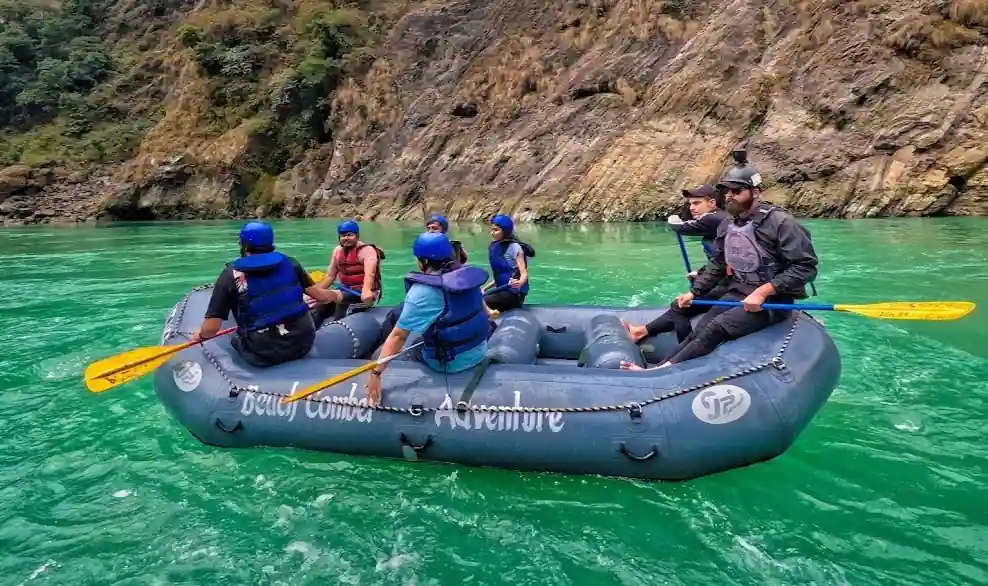
Even the government knows the importance of Rafting in their economy, so it also monitors the rafting practices in Rishikesh. It has several official travel agencies and incredible rafting routes, and that adds to its legitimacy.
However, around 5 or 6 years ago, the Government banned rafting and all other water activities. Due to two reasons, the safety of tourists and the protection of Rishikesh’s environment and wildlife.
But, after some modifications and getting to know that rafting didn’t have any major ill effects, the Uttarakhand High Court allowed rafting in Rishikesh. And just after the unban, more than 8000 tourists arrived in Rishikesh in just 10 days.
a) What is the age limit for rafting in Rishikesh?
Generally, The age limit for river rafting in Rishikesh is 12 years to 65 years. (However, the maximum limit is now removed)
2. ⛰️Why choose Rishikesh?
Both of us are aware that Rishikesh is the best rafting destination, and is also known as the rafting capital of India.
Some reasons to support this statement are – The majestic river Ganga, lush greenery, serene weather, engaging environment, etc. But do you really think that these reasons are enough?
NO! There are several other reasons for this. So, let’s uncover them.
- Location – Rishikesh is one of the best locations where you can enjoy mesmerizing River Ganga, tall mountains, serene weather and a crowded city in the same place.
- The Holy River Ganga – India’s famous Holy River Ganga is a sight to behold. And rafting in it is a unique experience in itself.
- Rafting Route – Rishikesh has various types of rafting routes, like a short raft of 9 km up to a challenging route of 35 km. They all provide different rafting experiences but are safe and fun.
- Rapids – Rapida makes the rafting ride more thrilling, exciting, and fun. And luckily, Rishikesh has an ample amount of rapids, ranging from Level 1 to Level 4.
- Easy Camping – Rishikesh is one of the best places for camping. And, even some rafting packages include camping facilities mainly riverside camping.. So, you can experience both at the same time.
- Haridwar – We can’t forget the most divine city of India, Haridwar. If you have time, then make sure to visit there. It has everything: amazing weather, the Ganga river, holy chanting and crowds.
- Other adventure activities – Other than rafting, there are many activities to try, like camping, trekking, hiking, bungee jumping, and much more.
- Spiritual City – If you are a spiritual person and seeking enlightenment, then Rishikesh is a perfect blend of spirituality, peace and goodwill.
- Mental health – I’m sure whenever you visit Rishikesh, your mental health will skyrocket on the positive side, The weather, nature, and people will surely boost your morale.
- Yoga – Rishikesh is also known as the Yoga Capital of India. So, if you are fond of yoga and want a peaceful environment for it, then visit Rishikesh.
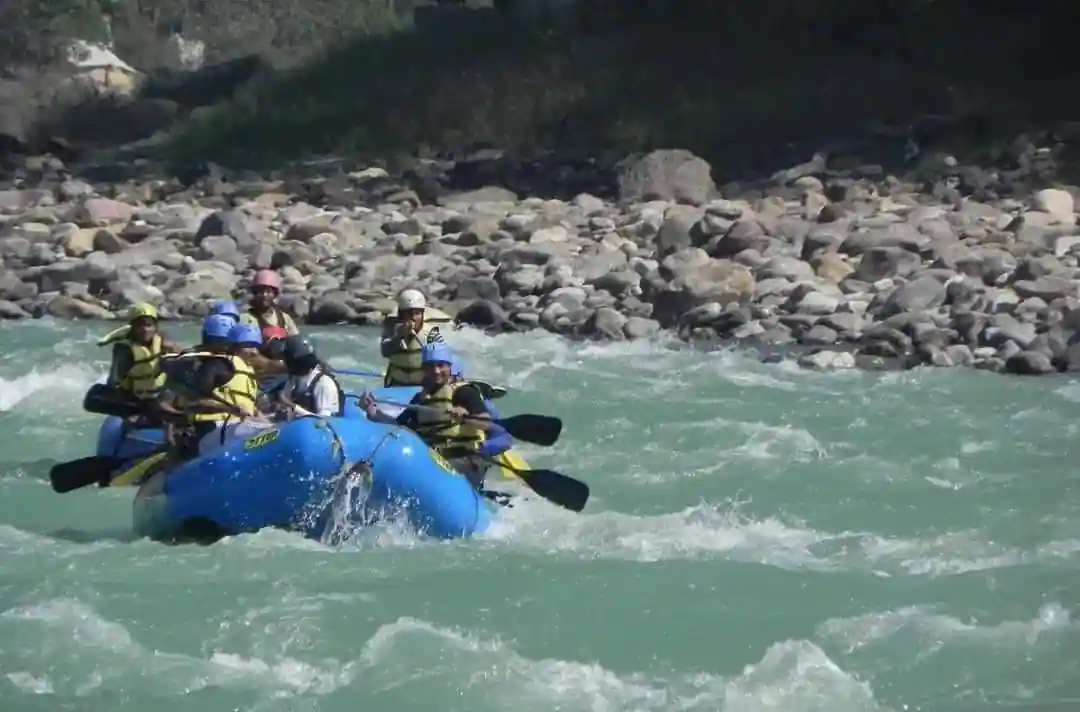
3. ⏲️Best Time to Visit Rishikesh For Rafting
Normally, if you want to raft in Rishikesh, then you can visit between September and June.
However, that doesn’t mean – Any time between September and June is perfect or suitable for you.
But, here is good news, I can narrow it down for a more safe and suitable time and that time is – September to mid-November and March to mid-June.
During this time, the weather is pleasant, the temperature is moderate, the water level is just fine and rafting is at its peak condition.
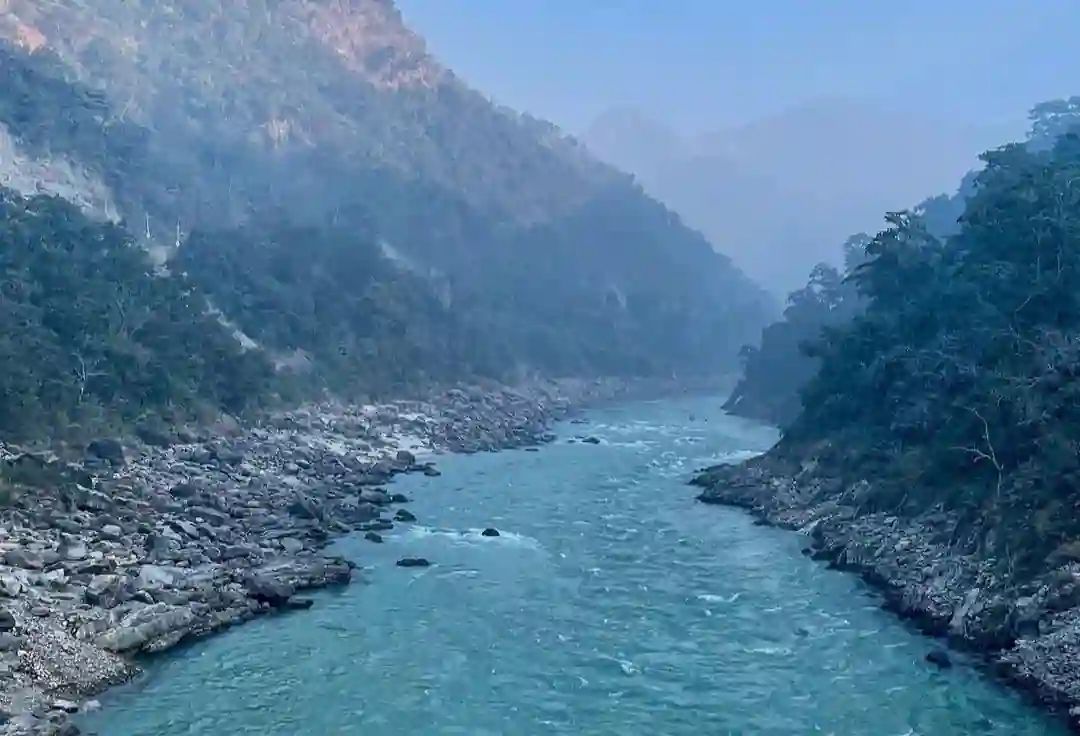
But, if you want an ultimate rafting experience then I would suggest you to choose Summer, because summer is the ideal time for water-related activities, especially rafting.
Hot temperatures, a clear sky, and a bright yellow sun create a proper and appropriate environment for rafting, and even the Ganga River boasts its peak condition, thanks to the meltdown of the Himalayas.
a) Which month is rafting not allowed in Rishikesh?
Did you notice that I excluded the months of July and August? BUT WHY?
It’s simple, these are the monsoon months – the worst time for rafting and any water-related activity, even camping.
Generally, rafting gets shut down during these months, and no one is allowed to raft. Because of unexpected rains, cold temperatures, flash floods, and high levels of the Ganga River.
This shutdown starts on the 15th of June and remains until 15th of the September.
So, you should also avoid this time.
b) Things to consider
i) Weather ☀️-❄️-🌦️
Before you embark on your rafting trip or book your package, make sure to get an idea of the overall weather and the current weather.
Consider everything, like rain forecast, hot weather, cold weather, strong winds, etc, then check which time is more suitable for you.
It would be better to consult your agency about this.
ii) Crowd 👥👥
If you don’t like crowds or are an introvert like me, then you should choose a time that is off-season or generally uncrowded.
I am talking about November, December, February and March.
But, if you want to experience rafting with the crowd, consider peak season, which is September, October, April, May and mid-June.
Pro Tip – During the off-season, you might get some significant discount.
iii) School/Office 🏫
Generally, families, office workers, etc choose either May or June, because of summer vacations.
This time is suitable for everyone and it also has the best weather compared to any other month.
– Preparing for the Adventure –
1. 🧳Packing For Your Trip
One of the reasons my rafting trip was a blast, and the reason is – I paid a lot of attention to my packing.
It is a very critical part of your planning and can alter the overall fun and convenience during your trip. So, don’t try to compensate with packing,
Generally, every rafting enthusiast contacts a travel agency for a safe and fun rafting experience.
So, they will provide all the necessary gear and equipment for rafting, like safety gear, raft, paddles, etc.
You just have to pack the essential and basic things that you will need before, during and after your rafting trip.
a) Basic
- Water bottle
- Sunscreen
- Quick dry shorts
- Swimsuit
- River sandals or sneakers
- Fleece jacket/sweater (for trips in spring/fall or on a rainy day)
- Sun Hat or Ball Cap
- Sunglasses
- Dry change of clothes for after the trip
- Camera
- Umbrella
b) The Essentials
- River permit (if required)
- GPS
- Satellite phone (If there is no network)
- Waterproof watch
- Knives
- First Aid Kit
- UV-protectant lip balm
- Bug spray
c) Toiletries
- A moisturizing cream
- Deodorant
- Toothpaste and brushes
- Liquid handwash/sanitizer
- Sunscreen
- Paperwhips
- Eyewash/eye drops
d) Food and stuff (If you planning a camp)
- Water (Depends on the number of people)
- Food (Don’t, if you plan to eat at a hotel)
- Simple snacks
- Utensils
- Portable stove
- Fuel for stoves
- Charcoal for firepan
- Lighter
- soap and bleach
- Spices and oil/butter
- Dish towels
- Sealable trash bags
2. 👔What to wear for rafting in Rishikesh?
If you want your rafting experience to be comfortable and fun, then make sure you are wearing a proper outfit. It includes – headwear, upperwear, footwear etc.
But clothing changes with the season and time, So, below I am gonna deep dive into this topic.
a)🧢Headwear
For summer, wear a cap or hat to shield your face from the sun and to keep the water out of your eyes,
For winter, if possible wear a warm cap or nothing. Because, if the cap gets wet, then it will be a problem.
Lastly Helmet – Always wear a sturdy, properly fitted helmet to protect your head from potential impacts against rocks or other obstacles in the river.
b)🩲Innerwear
For summer, wear a normal vest, that will keep all the sweat away from your body, and comfortable underwear, that won’t interfere with your movements.
But, during winter, along with these, wear an inner or warmer on top of a vest and underwear. Because, in winter the temperature fall .
c)👕Upperwear
During summer, wear a normal half T-shirt (Or full shirt, like me). Because it is both comfortable and cool during a hot sunny day.
But, in winter, always wear a full-sleeved warm T-shirt and a sweater on top of it. This will keep you warm in the cold climate of Rishikesh.
Avoid cotton clothes.
You can also wear a Rash guard to save your skin from friction, sun exposure and abrasion. Besides this, a Lifejacket is compulsory for rafting, but the travel agency will take care of it
d)👖Lowerwear
For summer, wear a trouser, lower or shorts. It totally depends on you, But I will suggest a lower or trousers. Avoid jeans at all, they are not comfortable.
But, in winter, wear a thermal layer to keep your legs warm and comfortable. Otherwise, your legs will go numb.
Avoid jeans and other tight clothes.
e)👟Footwear
Normally, a type of lightweight shoes are suitable for rafting, like Tennis shoes, running shoes, etc, and make sure they have laces.
f)😎Accessories:
Rishikesh can be quite sunny, so wear sunglasses to protect your eyes and vision from the sun.
In winter, you can wear Gloves (paddling gloves) to keep your hands warm otherwise they will go numb too. They will also protect you from blisters and provide a better grip
3. Is River Rafting Safe In Rishikesh?
Generally YES!
Rafting is completely safe in Rishikesh, and during my trip, I didn’t find anything which is unsafe or dangerous.
Just follow the guidelines, wear your gear properly, listen to your guide, and avoid unnecessary things etc.
I consulted my rafting guide and he told me, that the routes are divided into easy, moderate and hard categories. And, generally, the agencies will choose the easy and moderate routes by themselves, which are completely safe.
If you follow these things, then rafting in Rishikesh is a fun, thrilling and pleasing adventure.
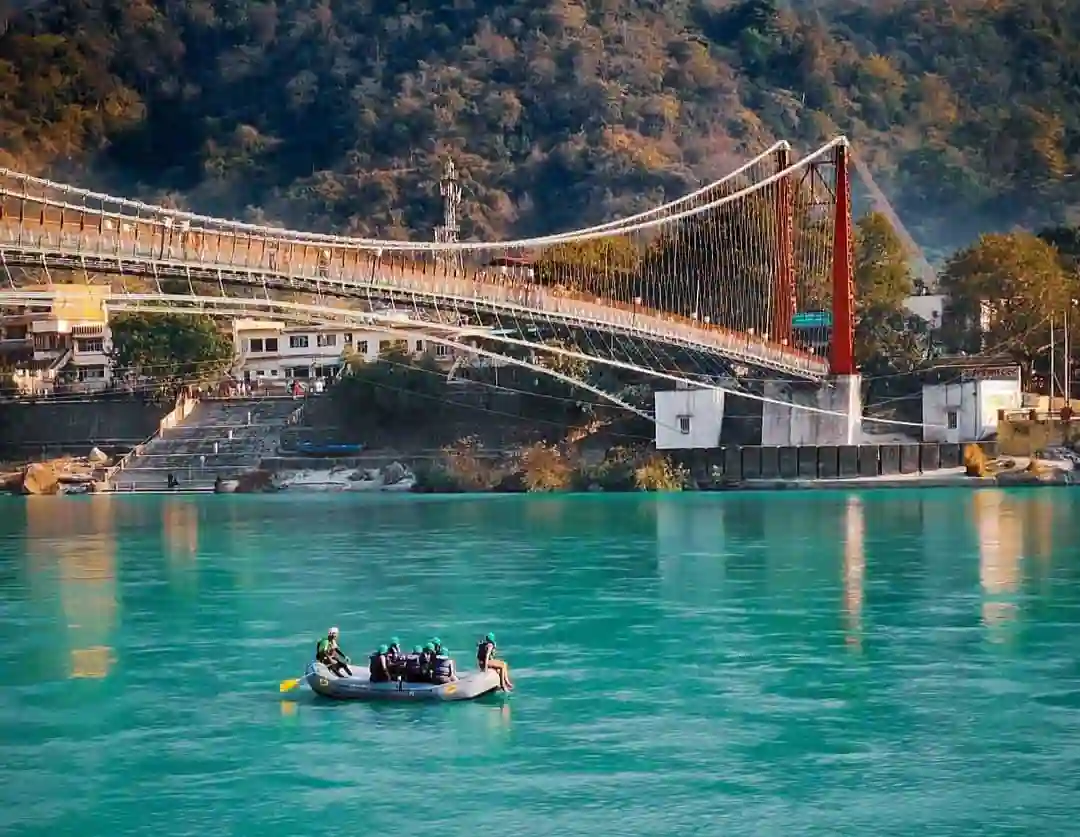
However, accidents and mishaps do occur in Rishikesh, like collisions, drawing, capsizing, etc. But, your guide will assist in such circumstances.
a)🚫Who should avoid river rafting?
Now, there are some people and some conditions, when you should avoid rafting.
Don’t try to take risks or something, because it’s necessary for your health and safety.
The people who are not suited for rafting in Rishikesh are
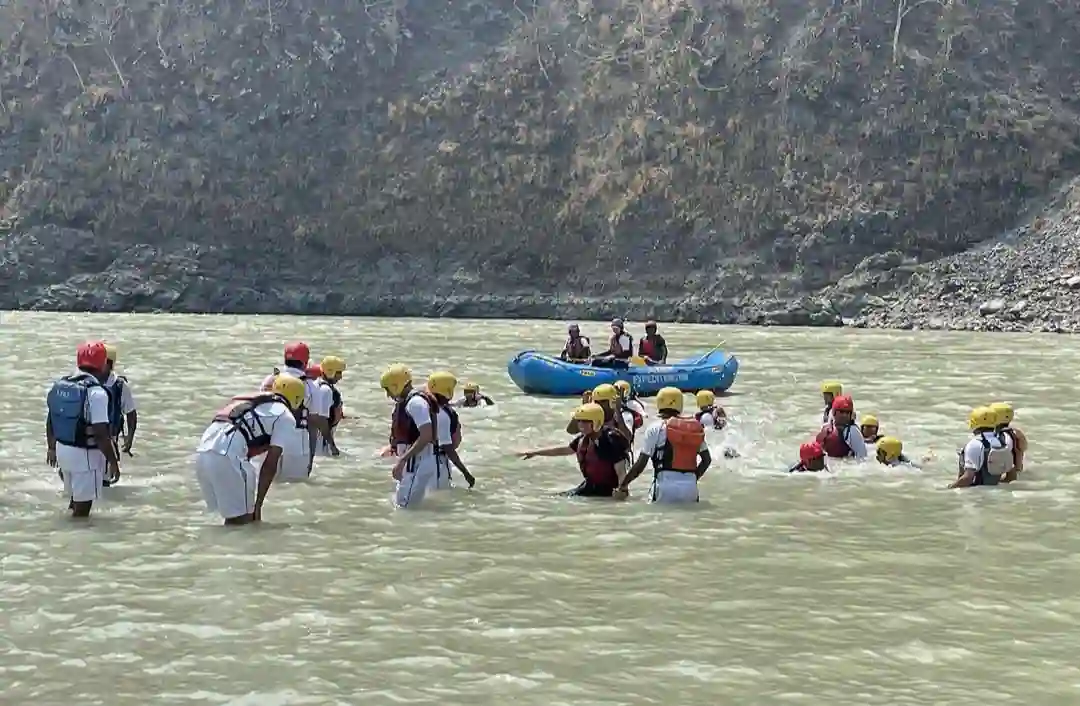
- Pregnant women.
- Someone who don’t have a clue about basic swimming
- Kids under 8.
- People above 65.
- Someone sick with nausea or motion sickness
- Any sick person
- Alcoholic or drug addict
- Disabled people or physically challenged
- If you have a low tolerance to cold water.
- And finally mentally weak.
b) ⚠️What are the risks of river rafting?
Like any other adventure activity, rafting comes with its own risks, But their possibility are very low, and even if you encounter one, your guide knows what to do next.
Let’s take a look at them.
- Getting thrown off the raft.
- Raft or boat getting upside down
- Drowning
- Dehydration
- Getting a sunburn
- Foot Injuries
- Blisters
- Collisions with rock
- Cold Water Shock
- Weather conditions
- Getting caught in strainers
- Lack of experience
– The Rafting Experience –
1. Best places for Rafting?
For my rafting trip in Rishikesh, I chose the Shivpuri route. It had a lot of positive reviews and feedback and most of them even declared it the best rafting point in Rishikesh.
And, after trying it personally, I can say that – It’s true.
It is short, safe and quite thrilling. So, while being safe we can experience the real excitement of rafting.
However, besides Shivpuri, you have 4 other options. Who knows, maybe one of them is best suited for your whole group.
a)✅Brahmapuri To Rishikesh
- Cost – ₹ 600
- Distance – 9 kilometer
- Time Duration – 1 to 2 hours
- Grade – 1 and 2
Let’s start with the easiest and shortest rafting route of Rishikesh – The Brahmpuri to Rishikesh route.
If it’s your first time, then I will suggest you to start with this one. Because this can give a general idea of what to expect from rafting and being a level 1 raft, it’s pretty safe too.
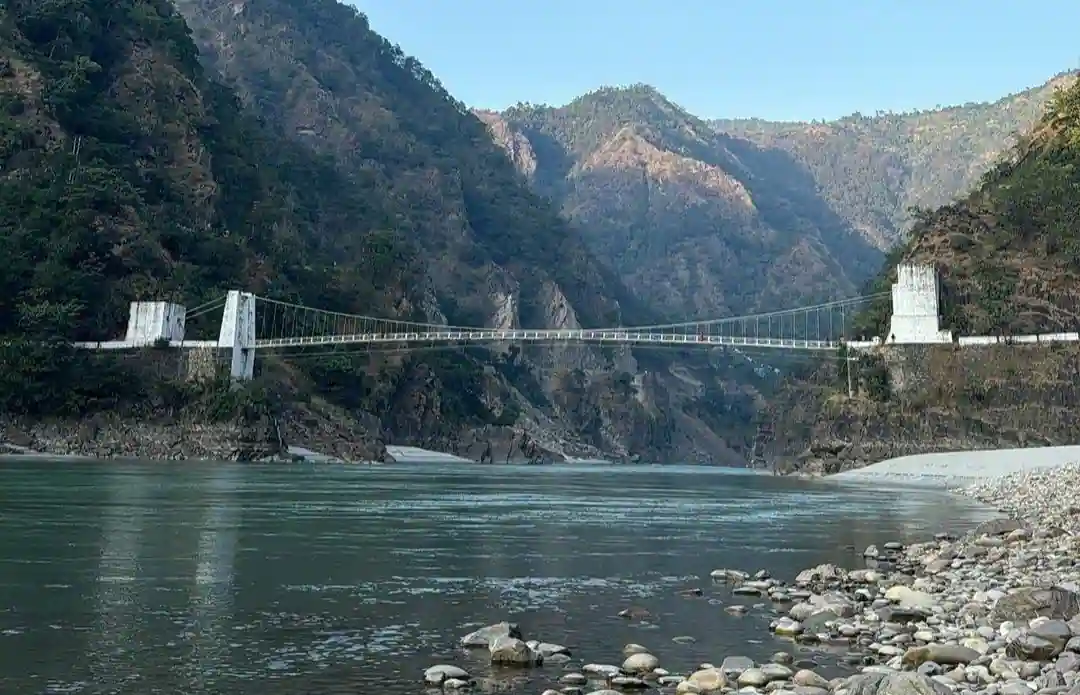
You have to reach Brahmpuri which is 9 km away from Rishikesh. There you will start your trip with proper gear and guide. You will come across many water streams, the pleasing valley of Uttarakhand, and lush greenery. Then, you will reach your final destination, the NIM beach of Rishikesh.
It is generally 9 km long, so if your speed is average, then it would take approximately 1 or 2 hours.
During the trip, you will come across many easy rapids, like Sweet Sixteen, Body Surfing, Hilton & Terminator, and Double Trouble. They will keep the rafting engaging and fun.
So, I will mention it again- If it’s your first time, or your group has kids, senior citizens, etc then you should consider this rafting point. This raft is also perfect for families, students, and kids for a thrilling rafting experience.
b)✅Shivpuri To Rishikesh
- Cost – ₹ 1000
- Distance – 16 kilometer
- Time Duration – 2 to 3 hours
- Grade – 2 and 3
Next, I have the best rafting stretches of Rishikesh, which goes all the way from Shivpuri to Rishikesh. Don’t worry, I personally experienced this, and I can say this confidently – It is the best rafting route for everyone.
I, along with my group, reached Shivpuri, which is 16 km away from Rishikesh, so if you have your own then it’s fine, otherwise contact your travel agency.
From there, we get everything crucial to the trip, like gear, guide, instruction etc. Then, we boarded our raft, and started our journey.
The ride was filled with easy-to-moderate rapids and a captivating environment that maintained the thrill and kept the rafting engaging throughout the journey.
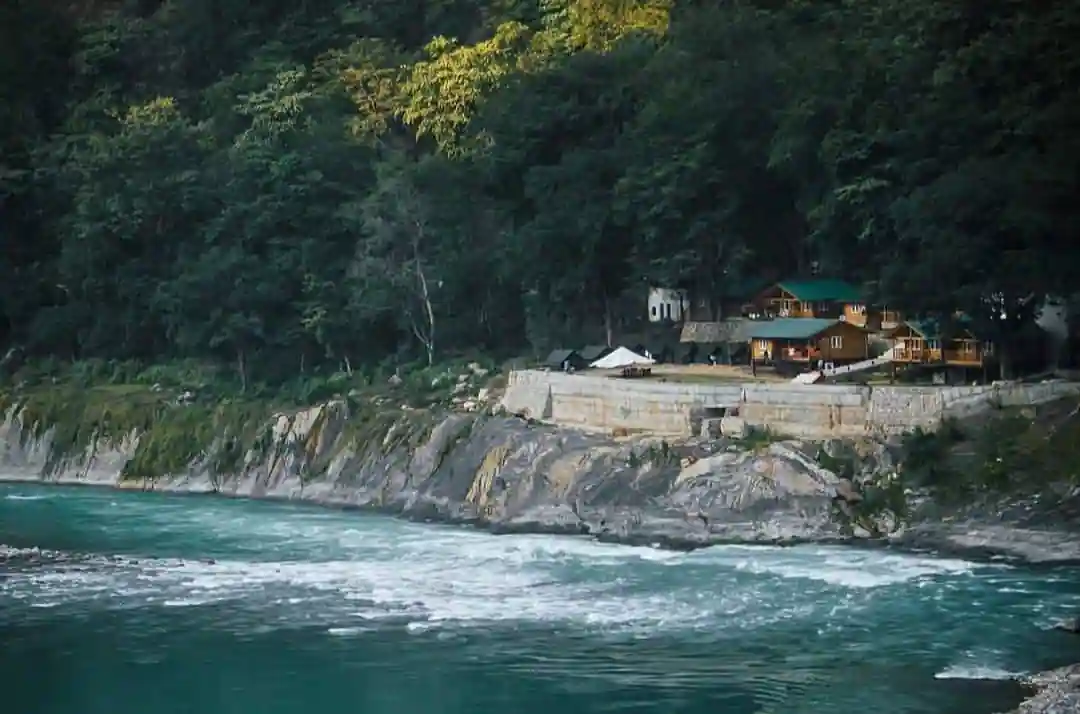
We were all adults, so it took 2 hours for us to reach our target, the NIM beach in Rishikesh.
After this, I realised why people consider it – It wasn’t too short or too long, had a significant amount of rapids, and was pretty safe.
And also the cost is ₹1000 only, which covers mostly everything (except food), like a guide, raft and equipment.
c)✅Marine Drive To Rishikesh
- Cost – ₹ 1500
- Distance – 27 kilometer
- Time Duration – 3 to 4 hours
- Grade – 2 or 3
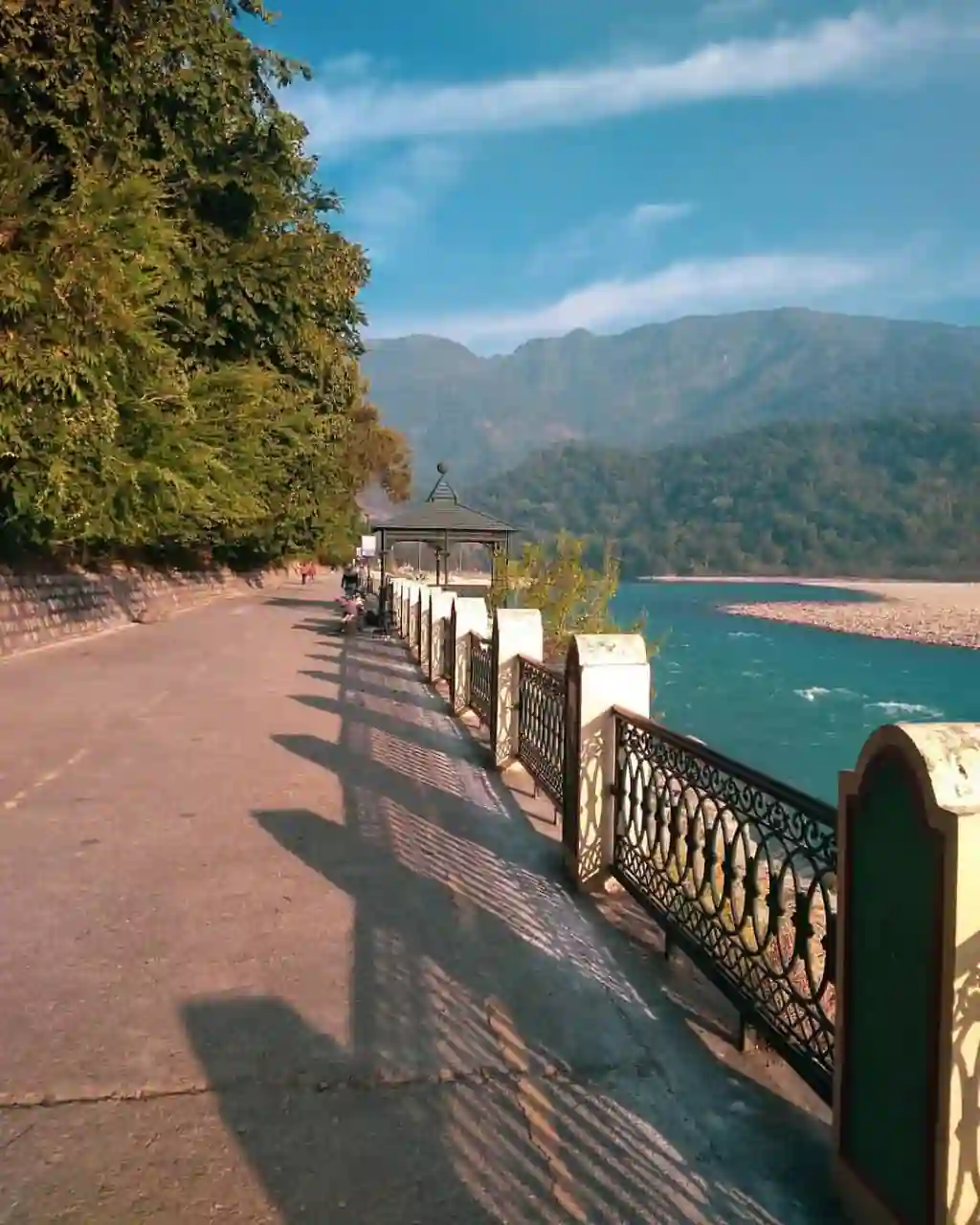
If you have any previous experience of rafting, and your group is filled with adults, then you should try the Marive drive route.
A 27 km long ride filled with amazing rapids, a captivating valley, high streams and excitement lurking on every corner.
It is also a level 3 raft, just like Shivpuri. So, it is also safe for families, friends, adults and people who want a challenge.
If you raft at a moderate speed, then it will take 3 to 4 hr, but this time will be a pure rush of adrenaline.
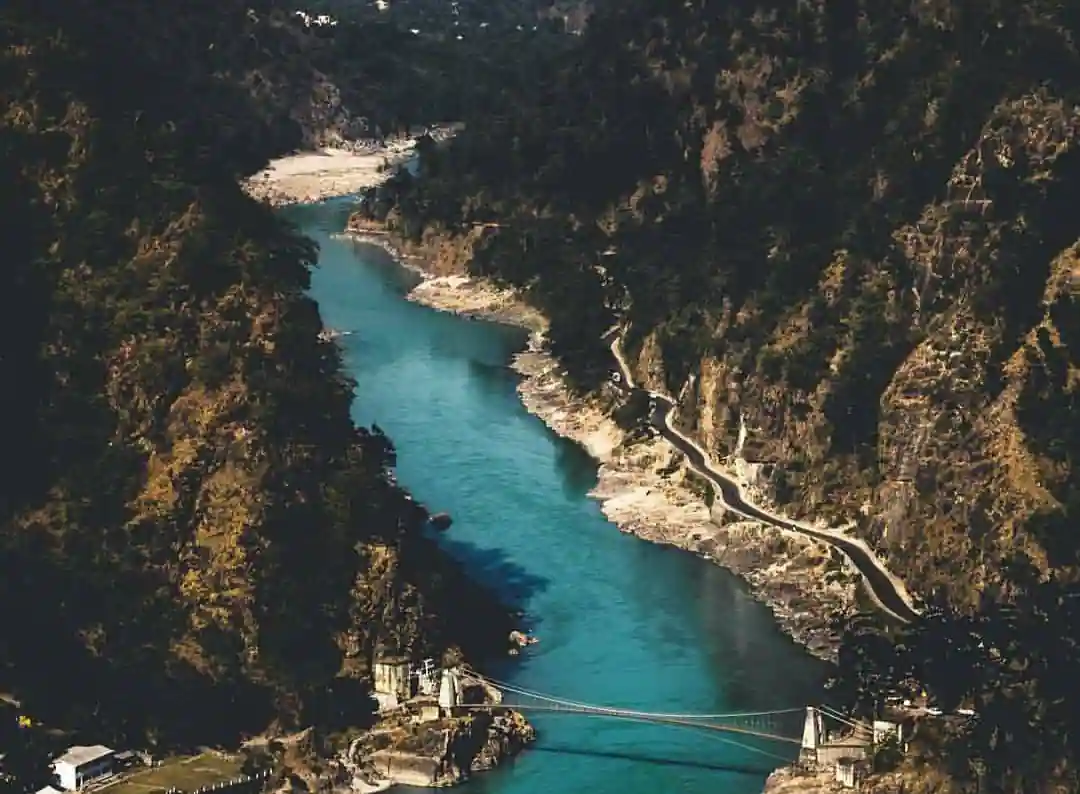
Compared to the previous one, it has 14 rapids, and moreover, they come one after another. So be ready for a rafting experience, that is filled with thrill and lots of adrenaline.
But don’t worry, after the difficult rapid path, you will have enough time to relax and catch your breath.
Because, after that, you will encounter a calm and still water, where you can catch glimpses of nearby sceneries and nature.
d)✅Kaudiyala To Rishikesh
- Cost – ₹ 2500
- Distance – 35 kilometer
- Time Duration – 4 to 5 hours
- Grade – 3 and 4
Now, if you are a frequent rafter, and want a challenge or rush of adrenaline, then consider Kaudiyala route. It is one of the most thrilling yet adventurous stretches of Rishikesh.
Generally, it’s a level 4 raft, so it is dangerous and suggested for only experienced ones.
If you want to be safe then consider the first 3 routes, not this one.
It’s a long journey of 35 km, that is filled with some exciting and dangerous rapids, currents and challenges. So, every second of this rafting journey will be exhilarating.
First, reach Kaudiayala town of Rishikesh, which is 35 km away. From there, check your gear, boat etc, and after the safety talk with your guide, hop in your boats.
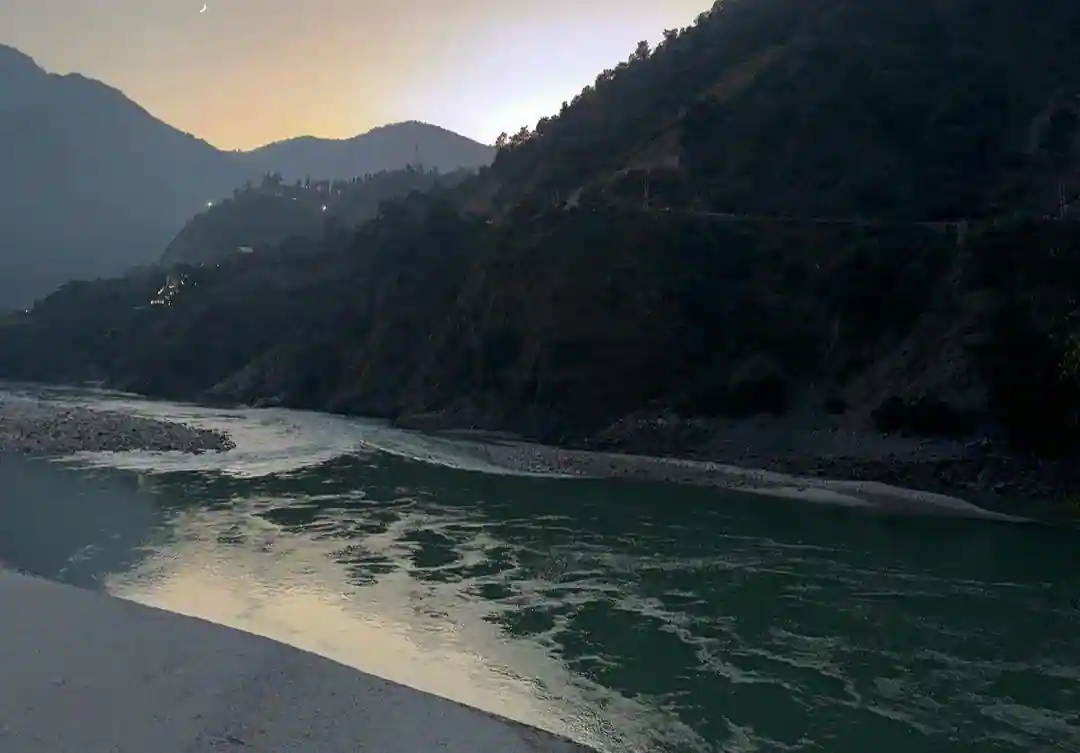
But, before embarking on the raft make sure everyone in your group is fit – both mentally and physically. Because, you need to paddle continually for 4 hours in high currents, dangerous rapids and even in still water.
Finally, after a brutal fight against water for 4 hours, you will reach your climax destination – the NIM beach of Rishikesh.
Rapids with a lot of rocks and unstable waves is the main reason for it being the harder stretch from the above 4 stretches.
But don’t worry, after reaching the climax, you will have a feeling of accomplishment and satisfaction.
e)✅Devprayag to Rishikesh (2 Days expedition)
- Cost – ₹ 8000
- Distance – 75 kilometer
- Time Duration – 2 days
- Grade – 4 and 5
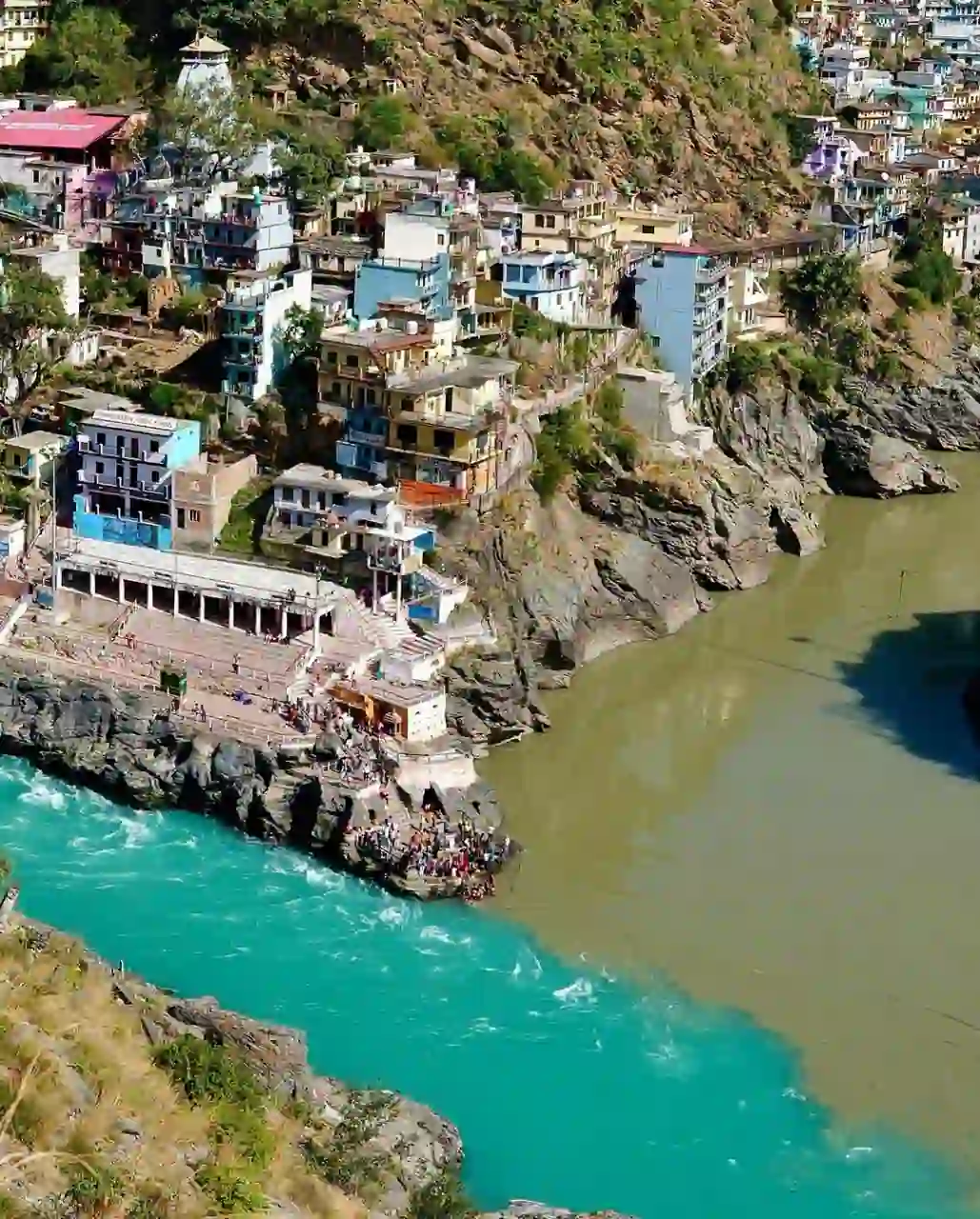
If you are still not satisfied and want something breathtaking, then I have a very different and dangerous route – Rishikesh to Devprayag.
But, make sure you are an expert, professional or at least have a good rafting experience before you choose this route.
This rafting route consists of 2 days of rafting, 2 nights of camping and some extra time for other activities, like hiking, exploring etc. Everything will be included in the same package.
That’s why, in order to board this raft you need incredible stamina, physics, durability and mental strength.
You have to cover 75 km in 2 or 3 days, in which your first trip you will raft to Kaudiyala, where you will experience some beach camping, and next day you will depart again and this time your destination is Devprayag.
Just a sec ago, I mentioned this raft as the hardest, that clearly means more rapids of level 4 or higher. So, there won’t be any shortage of thrill and adrenaline.
So, make sure to give it a proper thought, before you consider this rafting route.
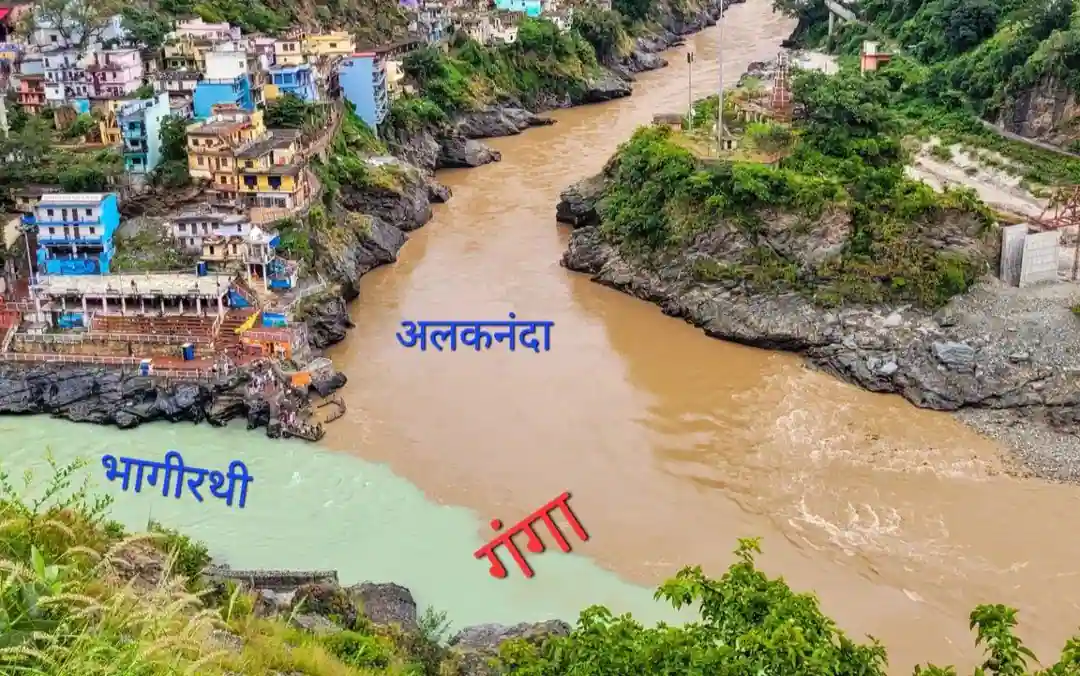
2. Levels of rafting in Rishikesh
Do you know that the rafting routes in Rishikesh are generally divided into 5 levels – 1, 2, 3, 4, and 5 levels.
Now, what does that imply?
In simple words, the level means how difficult it is to raft on that particular route. And these levels can assist you in choosing the best rafting route. So, let’s take a look at them.
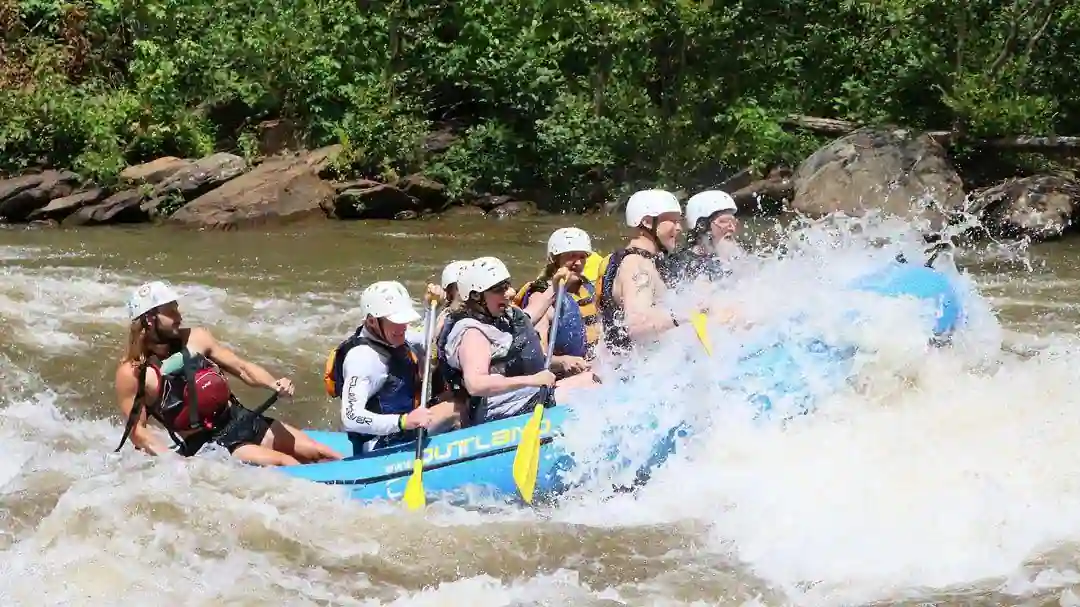
- Levels 1 and 2 ⭐- If it’s our first time, then you should start with either level 1 or 2. These levels are basically for beginners, kids, senior citizens etc. You can say these are just float trips with minimal challenges. Don’t worry, the surrounding, high current of water will keep you engaged.
- Level 3 ⭐⭐- This is where the real challenger starts. Level 3 is designed for those seeking an adrenaline rush in a secure environment.
- Level 4 ⭐⭐⭐– Next, we have level 4. If you are a frequent rafter or have a decent experience in rafting, then you should consider this level. It is more exciting than the above levels while being safe then the upcoming one.
- Level 5 ⭐⭐⭐⭐- This is the pinnacle of rafting. If you think you are an expert or want a new challenge, then you can try this. There are high currents, huge amount of rapids and danger lurking on every stream, you should not take this lightly.
You should learn the basics of swimming for every level or route, it will be beneficial.
However, that doesn’t mean it’s necessary. If your rafting route is up to level 3, then it’s fine. Your guide will take care of everything.
Mostly every company accepts non-swimmers. Well, that is because they have amazing safety facilities, an instructor, and they only raft in safe waters.
– Preparation before departure –
1. 📝Read reviews
I will advise you to learn from other people’s experiences. Because, it will give you confidence and an understanding, of what to expect in Rishikesh. So, you can consider the following tips.
- Read blogs on rafting.
- Listen to personal experiences and stories.
- Read reviews and feedback.
- Watch social media posts.
- Read comments on posts and videos on social media.
- Watch YouTube videos.
- Ask someone experienced.
2. How to Reach
I think you are ready to go rafting in Rishikesh, and have planned everything beforehand. So, now is the question – how to get there?
By road, train or air, you are free to choose any means of transport according to your preference.
I still prefer the roadways. It is the best and ideal method to reach Rishikesh. Because if we look at other options, then the nearest airport is 20 km away and only a few trains run directly to Rishikesh.
However, let’s discuss how to use every mode in the right way.
a) 🚌By road
Roadways are still the superior means of transport for Indians and every middle class family. Because, like I mentioned earlier, these are budget friendly, easily accessible and sometimes fun.
And Fortunately, Rishikesh has a vast and rich connection of well-built and well-maintained roads. I often use this method because it’s easily accessible, budget friendly and a fun ride.
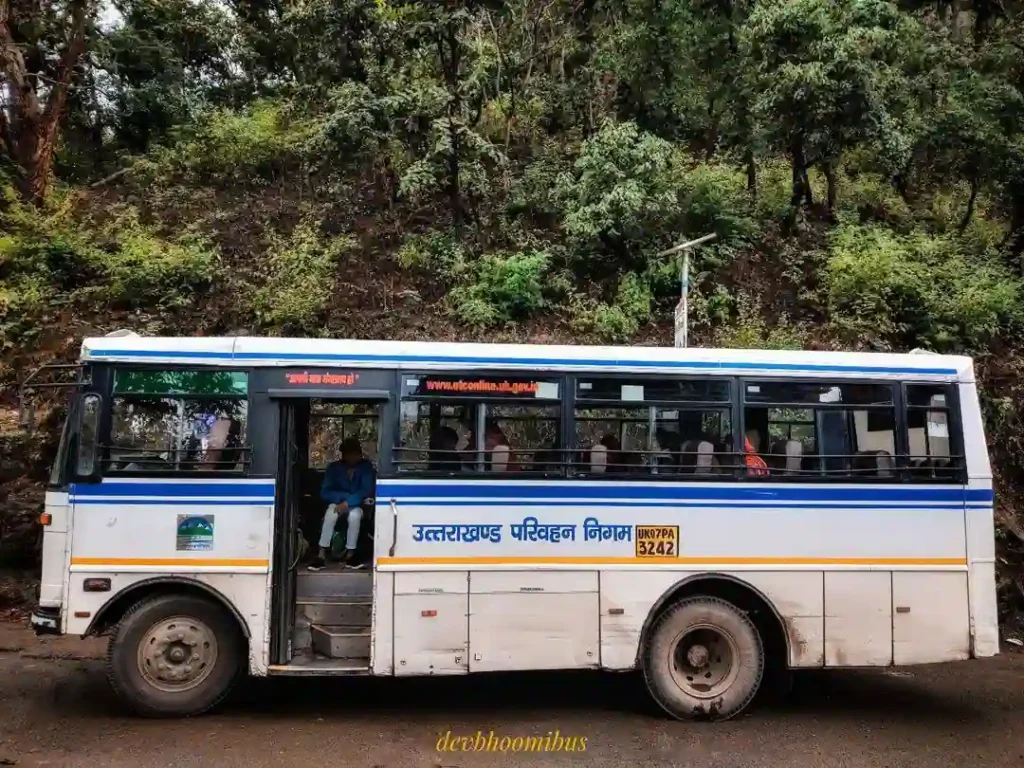
Now, you have two options, either you book public transport or drive your own vehicle. If you are planning to drive your own vehicle, then use Google Maps for navigation and start your journey.
But, if you want to use public transport, then it’s fine. Just reach your nearest ISBT or state-level depot and book a bus that goes directly to Rishikesh or Haridwar. You can choose a sleeper, ac or a regular bus.
You can also book your ticket online by visiting UTC’s official website.
b) 🚈By Train
If you have extra time to spare and want a more budget-friendly option, then you are free to book a train ride.
Luckily, Rishikesh has a decent railway station, but it’s only connected to a single major station – Haridwar.
So, it’s possible to book a direct train to Rishikesh, but if your home city doesn’t have this option then you have to reach Haridraw city.
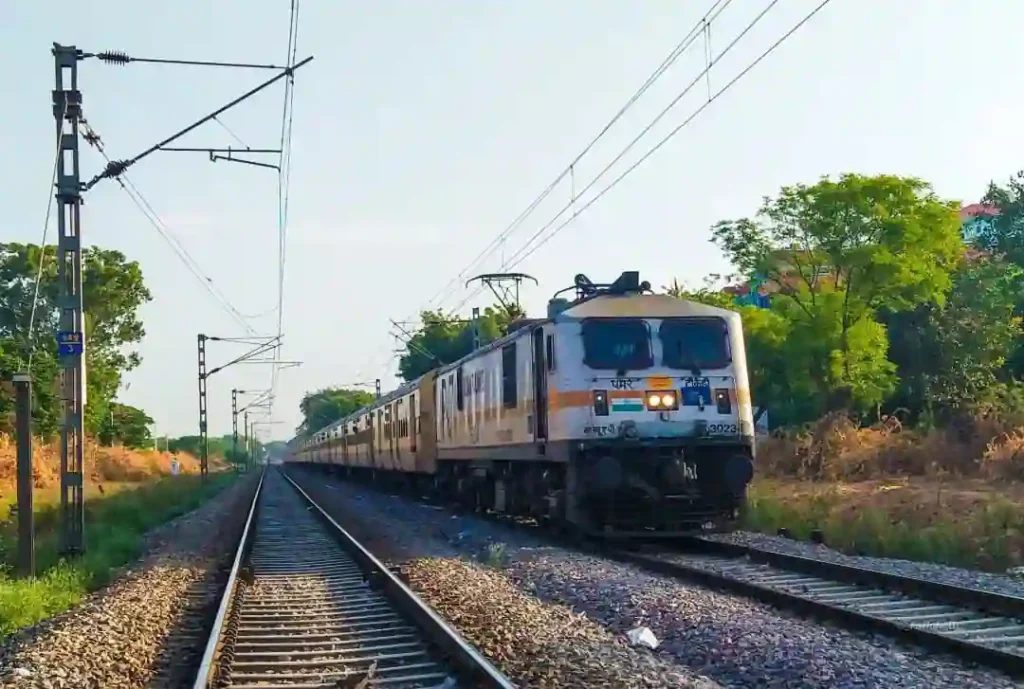
From there you can catch a UTC bus to reach Rishikesh, which is approximately a 40-minute ride. But, the lively city and spiritualism will ensure the ride remains engaging and enjoyable.
You should exploit this chance to explore Haridwar – One of the most spiritual and divine cities of India.
Some major trains from Delhi or Haridwar are the Shatabdi Express, Jan Shatabdi, Mussoorie Express, etc.
c) ✈️By air
Did you know that Uttarakhand state has only one operational airport – the Jolly Grant Airport in Dehradun?
So, if you are planning to visit Rishikesh or any other part of Uttarakhand by air, then booking a flight to Dehradun is necessary.
Although I have never been on any flight towards Dehraun, I have friends who have a great idea about the condition.
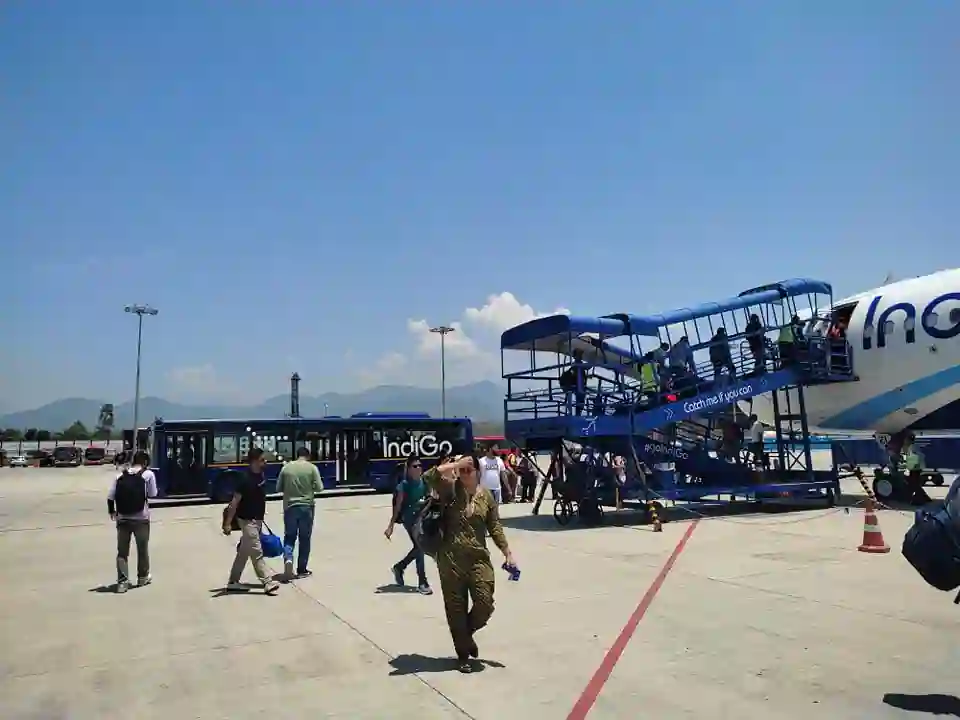
In short, he told me that – Rishikesh has regular flights from Delhi, Bengaluru, Mumbai and other cities of India. Besides this, the rates are generally reasonable and the plane along with the airport has decent facilities and service.
Upon reaching Dehradun, you have two options – Booking a cab or catching a bus. Cabs can be quite expensive but buses are generally budget-friendly.
3. 💡Tips For River Rafting
How about some tips before we conclude this article? Because I think tips are necessary to enhance your rafting experience while making it super easy and fun. So, I believe I should share them with you.
- Choose a licensed and professional travel agency.
- Know the basics of swimming.
- Try to raft in the afternoon.
- Keep hydrated
- Don’t be over-smart.
- Let your guide be the boss.
- Don’t skip or ignore the safety talk of the guide.
- Wear the right attire.
- Especially Helmet.
- Know the right grip and hold it tightly.
- Hold the paddle properly.
- Practice the T-grip
- Don’t leave your boat, no matter what.
- Do not panic, stay calm in every situation.
- Leave your valuables in a locker or your hotel room.
- In case of any accident, just follow your guide.
4. Things to avoid during rafting in Rishikesh
Before we began our rafting journey, my guide gave a speech about the things that we should avoid or pay attention to.
- Make sure you are completely fit.
- You don’t have a phobia of water.
- Don’t stand in the boat, it is risky.
- Avoid cotton clothes, instead wear nylon or synthetic clothes.
- Alcohol and any beverage is strictly prohibited.
- Overconfidence.
- Oversized or broken life jackets.
– FAQ –
1. How much does rafting cost in Rishikesh?
Marine drive to Shivpuri – Cost 600/Person – 10km
Shivpuri to Nim Beach – Cost 1000/Person – 16km
Marine Drive to Nim Beach – Cost 1500/Person – 26km
Kaudiyala to Nim Beach – Cost 2500/Person – 36km
2. Which rafting is best in Rishikesh?
3. Which season is suitable for rafting in Rishikesh?
Rafting in warm weather and cold rivers is just a priceless experience. But, winter is also a great option.
4. Why was rafting banned in Rishikesh?
1. Increasing number of accidents.
2. Pollution in river Ganga.
5. How many people are allowed in rafting in Rishikesh?
– Wrap Up –
So, that’s it.
I have covered everything that you should know before you embark on your next rafting expedition. Like – best time, best places, backpacking, tips, safety, legitimacy etc.
If you ask me, I will confidently say this – Rishikesh is the ultimate hub for river rafting in the whole India, because of its pleasing weather, engaging environment, enchanting river Ganga and a variety of rafting routes.
And, to experience all of this, you have to be well prepared.
Make sure to book a reputed travel agency for your first or every river rafting trip, because they will play a significant role in this adventure, whether it is choosing the right route, give you direction or providing the right gear.
At last, I will just say this – Try to go through this article again and enjoy your next river rafting in Rishikesh.

